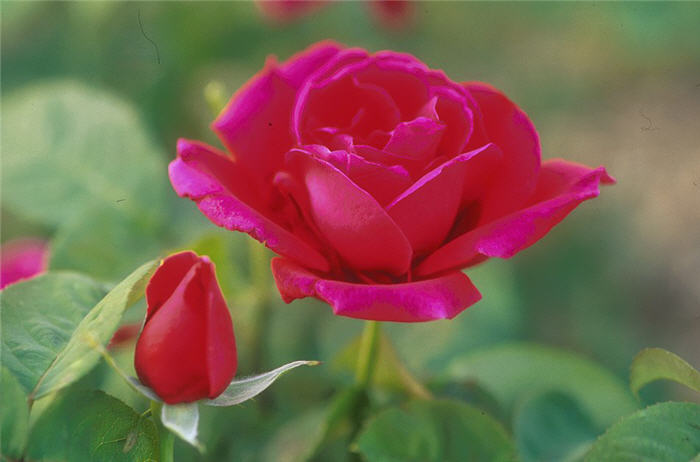| Botanical Name: Rosa x ssp. | |
| Common Name: Hybrid Tea Rose |

-
Anatomy
-
Culture
-
Design
Plant Type
Shrub
Height Range
1-3', 3-6', 6-12'
Flower Color
Lavender, Orange, Pink, Purple, Red, Yellow, White, Multi-Colored
Flower Season
Summer
Leaf Color
Green
Bark Color
Brown, Grey
Fruit Color
Red
Fruit Season
Fall
Sun
Full
Water
High
Growth Rate
Fast
Soil Type
Loam
Soil Condition
Average, Rich, Well-drained
Soil pH
Neutral
Adverse Factors
Thorns/Spines
Design Styles
English Cottage, Formal, Mediterranean, Spanish
Accenting Features
Showy Flowers
Seasonal Interest
Summer
Location Uses
Background, Shrub Border, Foundation, Patio
Special Uses
Cut Flowers
Attracts Wildlife
n/a
Information by: Stephanie Duer
Photographer:
Photographer:
-
Description
-
Notes
Hybrid tea is an informal horticultural classification for a group of roses that were created by cross-breeding two types of roses, hybrid perpetuals and tea roses. It is the oldest group classified as a modern garden rose. Later hybrids were created by crossing other rose species. They typically have large, well formed single flowers on long stems. Hybridizing has introduced a wealth of colors, blends, and combinations, but frequently at the expense of over-all robustness, foliage appearance, and fragrance.
Grow in well drained, loamy-clay to sandy-loam soils. foliage suffers when plants are placed where there is poor air circulation. Avoid overhead watering as that can increase the plants susceptibility to disease and pest problems. Prune in late winter to early spring - see the Guides for tips on pruning, fertilizing, and other care issues. Hybrid tea roses are not drought tolerant and require regular watering to maintain vigor and to repeat bloom. However, given good soil and proper placement, they can be a part of a garden that is watered weekly.